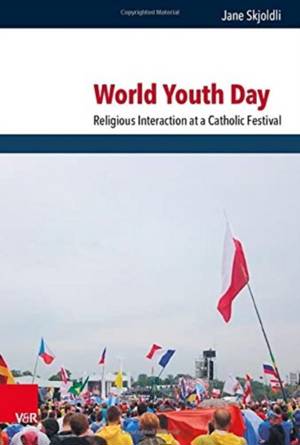
- Retrait en 2 heures
- Assortiment impressionnant
- Paiement sécurisé
- Toujours un magasin près de chez vous
- Retrait gratuit dans votre magasin Club
- 7.000.0000 titres dans notre catalogue
- Payer en toute sécurité
- Toujours un magasin près de chez vous
Description
Can digital games help us understand real life religion? With World Youth Day: Religious Interaction at a Catholic Festival, Skjoldli suggests that they can. The change is particularly visible from Skjoldli's new theoretical framework religious interaction, which draws on digital game studies. The framework centers on three key terms-interaction, interface, and immersion. Interaction constitutes the core of the stipulative definition of religion operative in this framework: interaction with culturally postulated superhuman persons. Interface represents the means by which interaction takes place. When interaction becomes emotionally charged, immersion takes place-whether it happens in religious contexts, gaming contexts, or other human activities like watching sports, reading books, playing instruments, listening and/or dancing to music. Religious immersion, Skjoldli suggests, is helpful for understanding-and making intelligible-the emotional charge of human-superhuman relationships, the power and vulnerability of the religious interfaces that enable them, the significance of emotionally charged experiences they afford, and the vexation expressed when interactions are frustrated by distraction, distortion, or destruction. In this book, Skjoldli employs her religious interaction framework in an analysis of how the Catholic festival World Youth Day (WYD) changed the meaning of pilgrimage in Catholicism. WYD emerged from a ritual, historical, and cultural context abundant associations to pilgrimage as the term is conventionally understood by scholars. WYDs are also consistently called pilgrimages, even when the host locations are not officially sanctioned as such. A substantive investment for the Catholic Church centrally, locally, and for the local event organizers, each WYD draws hundreds of thousands to millions of young Catholics from around the world. The pope always participates by giving speeches and leading some of the ceremonies. WYD is persistently referred to as a pilgrimage, and Skjoldli analyzes what pilgrimage has meant, what it means now, and how it changed in the context of WYD.
Spécifications
Parties prenantes
- Auteur(s) :
- Editeur:
Contenu
- Nombre de pages :
- 308
- Langue:
- Anglais
- Collection :
- Tome:
- n° 14
Caractéristiques
- EAN:
- 9783525554555
- Date de parution :
- 11-10-21
- Format:
- Livre relié
- Format numérique:
- Genaaid
- Dimensions :
- 155 mm x 231 mm
- Poids :
- 652 g

Seulement chez Librairie Club
+ 353 points sur votre carte client de Librairie Club
Les avis
Nous publions uniquement les avis qui respectent les conditions requises. Consultez nos conditions pour les avis.








